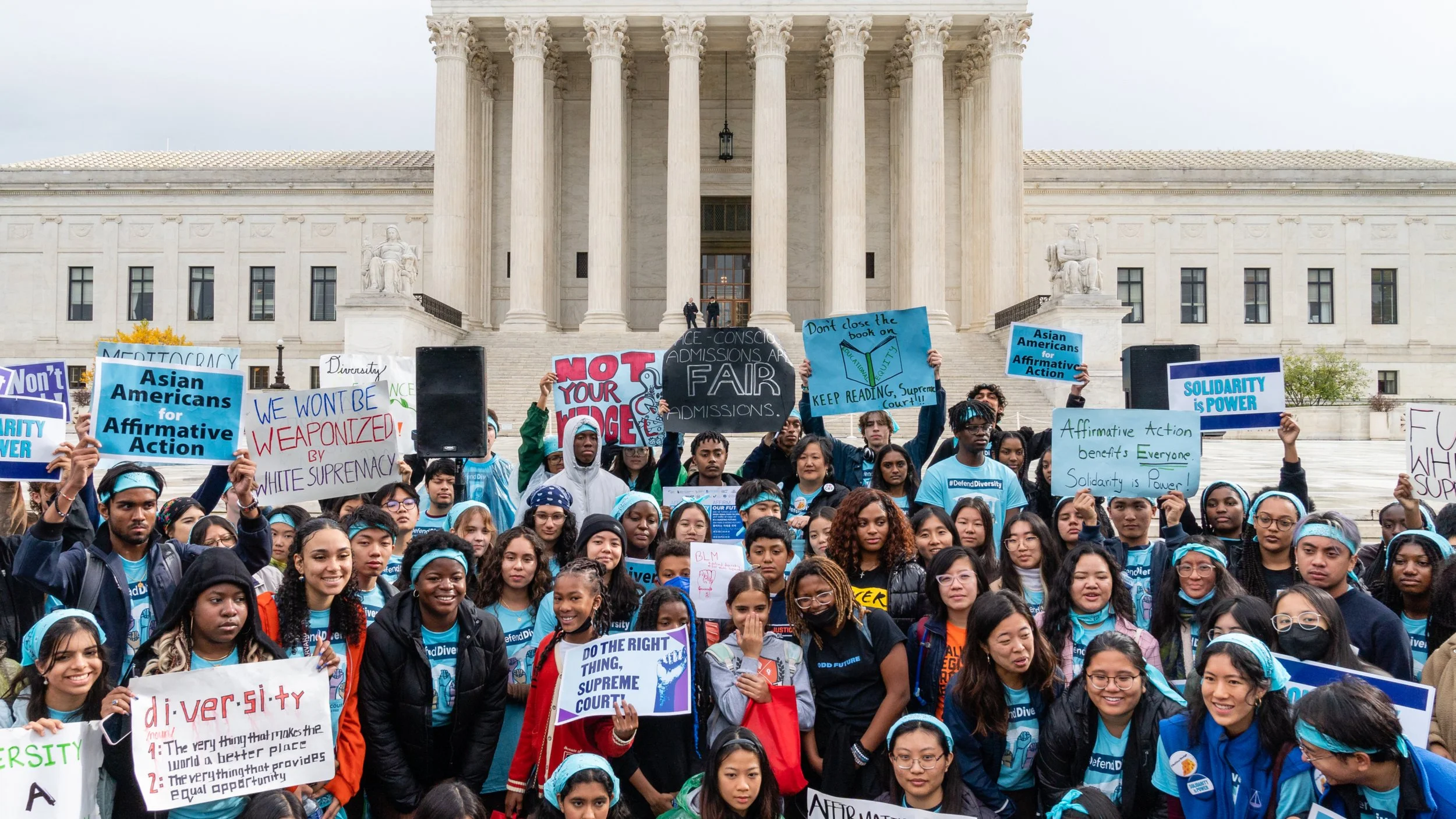The Affirmative Action Fiasco: What it Really Means
Photo via Getty Images
BRIAN KAYE: It’s been over two months since the controversial removal of affirmative action, effectively shattering the objective of promoting diversity and inclusivity on college campuses around the country. Nevertheless, the elimination of affirmative action sets the stage for new systems encouraging diversity in student bodies to blossom — systems possibly even more effective in promoting a healthy and diverse campus community than affirmative action ever was.
Although the policy was certainly beneficial and partially successful in trying to achieve this noble goal, the honest truth is that affirmative action was not exactly perfect. In fact, the tool formerly utilized by college admissions boards could even prove to be quite replaceable.
The removal of affirmative action has certainly caused a public stir, going against the general leftist trends present during the Biden administration’s tenure. Affirmative action, a tool commonly used by college admissions offices across the country, is a policy that allows using race as a determinant for incoming applications, intending to aid historically underrepresented and disadvantaged groups in society.
The practice, originally elevated to the public eye through Lyndon B. Johnson’s Executive Order 11246, was recently struck down through Fair Admissions v. Harvard, a verdict finalized on June 29th, 2023. The 6-2 decision claiming affirmative action violated the Equal Protection Clause of the 14th Amendment effectively overturned Grutter v. Bollinger and Regents of the University of California v. Bakke, two past cases in favor of the policy.
Another example of a conservative controlled Supreme Court hindering the overall goals and legacy of the Biden administration, the recent ruling led to President Biden himself publicly slamming the outcome, declaring, “Discrimination still exists in America. Today’s decision does not change that. It’s a simple fact.”
Some campuses have already undergone the change, such as UCLA and the University of Michigan, whose state governments banned affirmative action in 1996 and 2006, respectively. In both cases, the percentage of students belonging to minority groups such as Hispanic and Black students saw steady declines.
However, affirmative action was not a perfect practice. For one thing, the system was shown to put students from other minority groups at a stark disadvantage, specifically students stemming from Asian backgrounds.
Furthermore, the policy had the tendency to thrust students from underfunded and substandard secondary schools into rigorous university-level academics. Supplying first-rate education to traditionally disadvantaged groups is unquestionably a worthy cause and a service that universities should continue to provide. The transition from unsatisfactory secondary education to a demanding college education, however, can prove most difficult. Unprepared for college life, these students need time to adjust, which can hinder the ability to take advantage of their time in college as efficiently as their peers.
So if affirmative action did truly have its flaws, does that mean it is replaceable? While this conjecture can only be determined in time, other systems may yield a similar or even superior effect than what affirmative action once provided society.
The first policy to be noted harkens back to the aforementioned flaw regarding thrusting unprepared students into prestigious universities. Instead of solely introducing historically underrepresented students to first-rate academics beginning in college, providing top-level academics from elementary onwards could prove to be the key.
To do this, creating affordable housing in wealthy communities with premier school systems is vital. Granting members from low-income families access to quality education from childhood onwards can help emulate the effects of affirmative action, increasing the likelihood of these students attending top-level colleges through their academics and extracurricular activities alone. Furthermore, the policy helps ensure that once they arrive on campus they are as prepared to take advantage of their surroundings as any other student.
Another factor that could help replicate the diversity and inclusivity present on college campuses leftover from affirmative action is legacy admissions — or specifically, the removal of it.
The practice of legacy admissions typically encourages schools to favor applicants stemming from alumni families with the financial means to regularly donate, therefore occupying spots that could be given to traditionally disadvantaged applicants. Naturally, legacy applications tend to not pertain to any underrepresented groups in society, or increase campus diversity.
Although the removal of affirmative action is certainly a notable detriment worthy of concern, it does not necessarily signal the end of healthy and inclusive campuses around the country. Indeed, movements such as increasing low-income accessibility to premier secondary education and removing legacy admissions could together pick up where affirmative action left off.
Even more, these programs could yield diverse student bodies without the possible implications of impairing certain minority groups and thrusting unprepared students into rigorous college academics.
Affirmative action is gone, at least for the time being. While it is natural to lament and protest, the future may prove that the policy served as more of a crutch to society than a permanent solution, failing to efficiently deal with the problem at hand.
Brian Kaye is a sophomore in the College of Arts and Sciences studying Government and Economics. He is from Moorestown, New Jersey and is particularly interested in human rights, politics and law. He is a member of GU College Democrats, Hoyas for Human Rights and the Georgetown University ACLU.

